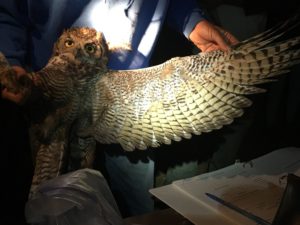Diversity and Inclusion Forum
2021 Diversity Forum
Workplace Safety: Considerations of Diversity for Wildlife Professional’s Inclusion
- Thursday, February 4, 2021 — 10:30am to 12:00pm
- The 2021 Diversity and Inclusion Forum on Workplace Safety will be organized by Bayan Ahmed (TWS-WS Diversity Chair), Callie Amoaku, and Kieran Hughes.
The general session will provide an overview of modern considerations for field safety, including stories of marginalized and minority professionals, and strategies of individuals or organizations to facilitate an inclusive workplace culture that effectively manage workplace safety.
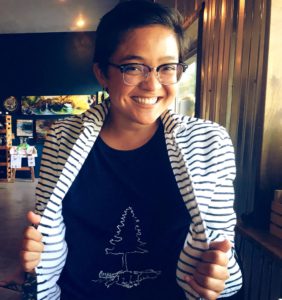
Sachiko Flores (she/her)
Inclusivity of the Deaf Community in the Wildlife Biology World
Even before times of physical distancing and pandemics, there has always been a gap between the Deaf community and the world of Wildlife Biology. Assumptions, frustrations, and miscommunications continuously plague the waters under the bridge that has yet to be finished building between these two worlds. To help build this bridge, I will recount my experiences studying Wildlife biology as an undergraduate student. The goal of this presentation is to highlight the struggle of a minority group with the wildlife and disabled communities. Also, this presentation will discuss how wildlife biologists study animals through studying visual cues, such as behaviors and patterns, and of how Deaf people study and encounter the world similarly. After informing the audience of the common practices that currently take place in the typical setting for in the wildlife profession, I will discuss ideas for inclusivity best practices. Conservation of nature and resources should be the goal of every group. However, without the conservation and preservation of cultures and diversity, we will always be missing part a piece of the puzzle to a much larger picture.
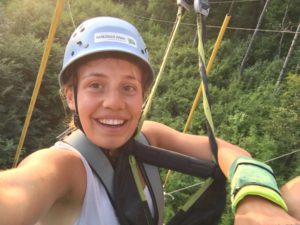 Kieran Hughes (she/her)
Kieran Hughes (she/her)
Workplace Safety in the Field
Staying safe while working in the field presents unique challenges that are not present in an office setting. There are some steps that I take working as a forestry technician for Davey Resource Group to ensure my safety while working in the field.
When I start a day in the field, I always make sure to take note of my surroundings and environment. I try to identify potential hazards present in the area. If I’m working in a rural area,I tend to look out for hazardous plant or animal life, uneven terrain, etc. If I’m in a more developed area, like in farmland or the WUI, I look out for things like hostile landowners (I’ve heard gunshots before), dogs, and cars. I also try to make sure I look at temperature or predicted weather conditions for the day. Some of the materials I work with are not waterproof, and I personally tend to overheat if I’m not careful.
Working in the field means we are often working in remote areas with little to no service. If I’m going to be in an area with no service, I let a supervisor or coworker knows where I will be working, how long I expect to be out of service, and then later when I am back in service. This way, at least one other person knows my general location, and since I’m often bushwhacking through the backcountry, it will be easier to find me in case something happens to me on the job.
Communication and talking to other employees keeps everyone accountable and is essential for safety. I am usually very nervous about speaking up for myself, but I now make a conscious effort to do so if I feel even a little unsafe. For example, I was once sent out somewhere by a supervisor who was unfamiliar with the area to check a high voltage tower, but there was no safe way to reach the tower. I eventually mentioned it to another supervisor, one more familiar with the terrain, and was told I would need a helicopter to safely reach the tower. It also helps other employees in the long run, since more information means we can all be better prepared. If I feel unsafe patrolling alone, someone will partner up with me to finish the area. This is something I have to think about because I am an easy target in more urban settings.
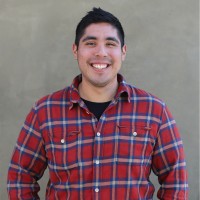 Gonzalo Llamas (he/him)
Gonzalo Llamas (he/him)
Field Safety from an Expert
Gonzalo Llamas is a safety manager with 4 years’ experience as a coordinating and managing safety programs. Mr. Llamas specializes in Overhead Electrical Safety consisting of daily crew inspections and audits, writing incident investigations and notifications, and leading Safety Stand-Downs. He has experience in the field, where he works with staff, conducting field observations and safety talks, as well as promoting a culture of safety. Additionally, Mr. Llamas is a certified BLS and First Aid Instructor, and has led more than 200 employees through the training.
He will discuss how to set up safety protocols or guidelines for wildlife biologists, and include discussions of how to better serve people of color/diverse backgrounds.
Melissa A. Blundell (she/her)
Simple Thoughts from a Woman in Wildlife
The short presentation will start out with an introduction, my personal experiences (woman in wildlife), any statistics or information of diversity and the wildlife field available, and ideas on outreaching to the local communities to encourage more diversity in our field.
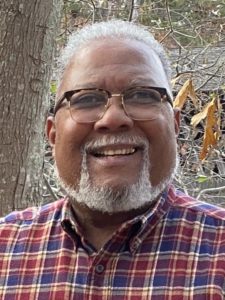 Columbus Brown
Columbus Brown
How Safety in the Office vs. the Field May Differ for Persons of Color
Change is normal; however human nature is most comfortable with the familiar and resists change. After 35 years in the fish and wildlife profession and 11 years as a Master Gardener, Columbus Brown explores the cultural challenges that African Americans and other minorities continue to face in the office and out in the field. He explores the internal struggles that wildlife organizations and minorities face regarding human safety issues while navigating cultural differences and attitudes. This includes the risk of employees and managers holding back on hiring and giving choice assignments to minorities because of possible safety concerns. Perhaps that is because they are challenged to conceptualize how to overcome institutional and societal racism that distracts from their mission. These factors limit the wildlife profession’s ability to hire, retain and promote minorities. The result has been limited growth in the diversity of members in the Wildlife Society and the wildlife profession.
